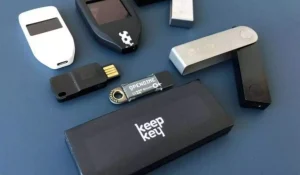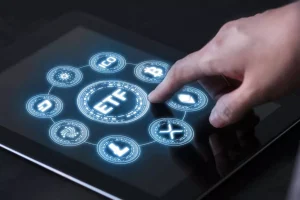Users have a variety of alternatives, including self-storage, exchange wallets, and third-party custodians, to safeguard their crypto holdings. Custodial services intend to present security by preserving the client’s private key on file, averting the prospect of unwanted access to assets. Nevertheless, a situation like the ftx collapse came as a shock to the whole crypto sector. Customers are now having second thoughts about the trustworthiness of crypto firms as a result.
Proof of Reserve (PoR) is a trend growing well-established across other exchanges as evidence that a firm is solvent and has satisfactory liquidity to keep on functioning to regain client trust. In this article, we’ll touch on PoR and its basic ideas.
The Essence of Proof of Reserve
How can we be sure a crypto financial organization has the funds it claims to have? Proof of Reserve is one method of verification. We can confirm the money is legitimate and present in this way. Crypto exchanges and businesses accepting digital coins employ the proof of reserves to reveal they have enough of the virtual coins they have committed to hold back for other customers. It is as simple as it goes:
- A cryptocurrency service records all its users’ financial holdings.
- The service must periodically make a comprehensive list available to the public detailing the overall amount of funds it currently has and the specific holdings of each user.
- By looking through this list, anyone confirms the service has enough funds to pay all of its users. It makes it less likely a platform would trick the customers into believing they have more money in their accounts than they actually hold.
Therefore, proof of reserves is a technique to guarantee service provider functions truthfully and has the funds it said it would keep for its followers.
This sophisticated method of cryptographic accounting is founded on the Merkle tree structure, which divides large amounts of complex data into tiny pieces to speed up processing.
To prove ownership of digital assets, the proof-of-reserve approach uses cryptographic verification. Centralized exchanges utilize it to verify their solvency and provide consumers peace of mind that the exchange would be able to pay deposits during market turbulence. Digital assets that may be validated online, such as through wallet monitoring, are referred to as PoR.
Cryptocurrency asset verification is a crucial step for honest interactions. It reassures investors the custodial platform is adequately liquid and solvent, and customers monetize their assets whenever they prefer.
An external auditor’s job is relatively straightforward. It generates a snapshot of the firm’s liabilities or the entire amount of consumer deposits. It then proves the enterprise owns the virtual assets. The business offers a digital signature from the private keys coordinating with its addresses. The auditor then resolves if total assets exceed total liabilities.
The exchange under audit also renders a Merkle tree, with each client account depicting a leaf. The auditor assures every commitment is present in the Merkle tree. Each client receives info on the leaf and a means of ensuring the route from the leaf to the Merkle root.


Turnkey Brokerage Solution For Your Business
Get the most profitable fully licensed fx/crypto brokerage software or ready-to-operate business in 48 hours. Best-in-class web & mobile trading platforms, sales-driven CRM, full integration with MT4/5, and 150+ payment providers.
Concerns About Proof of Reserves
People who utilize virtual coin exchanges or other services have concerns regarding proof of reserves. They are frequently unsure if the provider has as many funds as indicated in the accounts, which is the primary cause of their worries.
There are worries if the service does not disclose this information or if consumers suspect the provider is misleading about the actual quantity of money. In other words, if the service does not treat its consumers properly, people will be distressed that their money may be in danger. The Proof-of-Reserves idea presents other issues:
- Information regarding reserves does not indicate the exchange’s financial viability because partial confirmation does not provide information about the exchange’s commitments.
- Because such tests need access to client account information, thorough validation checks with independent proof of reserves audit results in privacy violations.
- The PoR does not cover all assets. Exchange balances, for instance, fluctuate often. Thus, any check only captures the state of affairs at a particular moment.
- Independent players are involved in the confirmed confirmations. However, you can exclude the probability that they won’t be so “independent” and instead work to benefit rival businesses or authorities.
Moreover, there is always a chance an auditor might make a mistake, or they will work with the stock exchange to provide positive audit reports.

Goal of Proof of Reserves
These transactions prove the crypto business has sufficient finances to compensate customers with money. It is easy to demonstrate it is not misleading clients and there is money in accounts. It is crucial because scammers in the crypto realm occasionally claim to retain the funds. Still, in reality, users might not have it and risk losing it or stealing it. Verifying the company’s reserve assets will make you feel more secure, knowing your money is safe.
This operation aims to guarantee financial transparency concerning the company’s balance sheet. Thanks to a third-party audit, customers can be sure the company they entrust their money to can operate and, more critically, allows client withdrawals.
A comprehensive PoR audit reduces the likelihood that an exchange would disregard its custodian responsibilities and utilize investor funds for its reasons, such as investing in businesses or lending users’ deposits to other parties. Additionally, it can help reassure users that the platform is not at risk of a liquidity issue, regardless of the state of the overall cryptocurrency market.
What is a proof-of-reserves (PoR) audit?
Verifying official papers and outcomes is known as attestation. An audit is a thorough examination and confirming the company’s assertions. An attestation is a document resulting from a PoR audit of a cryptocurrency corporation. The certification displays the stock balance as of the current date. Although periodical audits (such as monthly or quarterly) may be carried out, some businesses provide a real-time reserve confirmation balance on their website that is updated daily. The process can be separated into these steps:
Obligation verification
The outstanding virtual coin amounts investors must pay on their first demand are exchange liabilities. The estimate is based on the total amount of funds in client accounts. Then, it is contrasted with the complete inventory. The proof of commitment steps include utilizing a Merkle tree with the client’s cryptographic hash.
Reserves checks
Reserves are the digital assets which the exchange holds within the blockchain technology under the control of the private keys. Crypto address balances are totaled during verification. An exchange may provide ownership evidence by giving a public key connected with an address and signing it with a private key.
Work with the reserve confirmation
Using a public data set, an auditor is not required to examine the complete blockchain. A deterministic function always produces the same outcomes for the same input values. It is essential for any blockchain since it is hard to reach an agreement if transactions don’t result in the same thing every time, regardless of who begins them.
The results of the audit, as well as its attestation, that is, confirmation of the reliability of the software, are two critical components of confirming the solvency of a cryptocurrency exchange.
Do all crypto exchanges need to publish reserve balances?
The biggest and most significant crypto ventures in the world are exchanges. They conduct a lot of trading and hold many digital tokens for their clients. Today, no explicit laws or procedures require public confirmation of these reserves’ existence. However, these circumstances may soon alter since numerous crypto businesses failed in 2022 due to cash liquidity issues.
Crypto businesses operating as customers’ custodians should demonstrate their reserves. It demonstrates the safety and availability of consumers’ funds and cryptocurrencies, as well as accountability to clients, and fosters faith in their financial stability.
It is crucial to highlight confirmation of reserves is not required for cryptocurrency firms which are not custodians of client assets (non-custodial) since they do not have access to client funds and are thus not responsible for their maintenance.
The current situation in the cryptocurrency industry has compelled its community to create and use efficient solutions to check and keep track of trade activities, one of which is the crypto-auditing proof of reserves mechanism. Its practical use will improve transaction transparency throughout all financial sectors, not just the specialty of cryptocurrencies.






